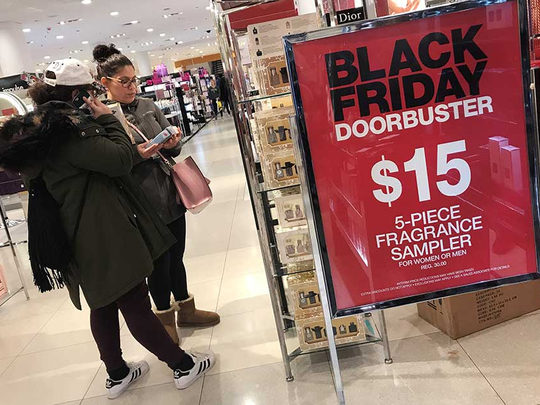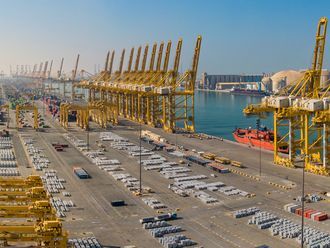
Washington: Prices for US consumers jumped 6.8 per cent in November compared with a year earlier as surging costs for food, energy, housing and other items left Americans enduring their highest annual inflation rate in 39 years.
The Labor Department also reported Friday that prices rose 0.8 per cent from October to November — a substantial increase, though slightly less than 0.9 per cent increase from September to October.
Inflation has been inflicting a heavy burden on consumers, especially lower-income households and particularly for everyday necessities. It has also negated the higher wages many workers have received, complicated the Federal Reserve’s plans to reduce its aid for the economy and coincided with flagging public support for President Joe Biden, who has been taking steps to try to ease inflation pressures.
Fuelling the inflation has been a mix of factors resulting from the swift rebound from the pandemic recession: A flood of government stimulus, ultra-low rates engineered by the Fed and supply shortages at factories in the US and abroad. Manufacturers have been slowed by heavier-than-expected customer demand, COVID-related shutdowns and overwhelmed ports and freight yards.
Employers, struggling with worker shortages, have also been raising pay, and many of them have boosted prices to offset their higher labor costs, thereby adding to inflation.
The result has been price spikes for goods ranging from food and used vehicles to electronics, household furnishings and rental cars. The average price of a used vehicle rocketed nearly 28 per cent from November 2020 to last month — to a record $29,011, according to data compiled by Edmunds.com.
The acceleration of prices, which began once the pandemic hit as Americans stuck at home flooded factories with orders for goods, has spread to services, from apartment rents and restaurant meals to medical services and entertainment. Even some retailers that built their businesses around the allure of ultra-low prices have begun boosting them.
Over the past 12 months, the costs paid by a typical American family have surged by roughly $4,000, according to calculations by Jason Furman, a Harvard economist and former Obama White House aide.
Though Americans’ overall income has also increased since the pandemic, a new poll found that far more people are noticing higher inflation than higher wages. Two-thirds say their household costs have risen since the pandemic, compared with only about a quarter who say their incomes have increased, according to the poll by The Associated Press-NORC Center for Public Affairs Research.
The 6.8 per cent jump in prices for the 12 months that ended in November was the largest year-over-year increase since a 7.1 per cent surge for the year ending in June 1982. That spike occurred at a time when the Federal Reserve had driven up interest rates to double digits in its effort to stem runaway inflation triggered by the oil price shocks of the 1970s.
The persistence of high inflation has surprised the Fed, whose chair, Jerome Powell, had for months characterized inflation as only “transitory,” a short-term consequence of bottlenecked supply chains. Two weeks ago, though, Powell signaled a shift, implicitly acknowledging that high inflation has endured longer than he expected. He suggested that the Fed will likely act more quickly to phase out its ultra-low-rate policies than it had previously planned.
Doing so would put the Fed on a path to begin raising its key short-term interest rate as early as the first half of next year. That rate has been pegged at nearly zero since March 2020, when the coronavirus sent the economy into a deep recession. Borrowing rates would rise for some consumer and business loans.
Financial markets, which had largely anticipated Friday’s inflation figures, took them in stride. Treasury yields were relatively steady, while stock prices rose modestly. Russell Price, chief economist at Ameriprise, said the market response suggests that investors have become accepting of the reality that the Fed will accelerate its pullback of the emergency economic aid it supplied after the pandemic.
Driving much of the inflation last month were energy prices, particularly gasoline pump prices, which are up a dizzying 58.1 per cent from a year ago. The costs of housing, food, vehicles, airline tickets, clothing and household furnishings were also big contributors to the November price surge.
Core inflation, which excludes volatile food and energy prices, rose 0.5 per cent in November. Over the past 12 months, core prices are up 4.9 per cent , the biggest such increase since 1991.
Some economists are holding out hope that inflation will peak in the coming months and then gradually ease and provide some relief for consumers. They note that supply shortages in some industries have begun to gradually ease. And while higher energy costs will continue to burden consumers in the coming months, Americans will likely be spared from earlier forecasts that energy prices would reach record highs over the winter.
Oil prices have been declining modestly and leading, in turn, to slightly lower gasoline prices. Even more dramatically, natural gas prices have plummeted nearly 40 per cent from a seven-year high reached in October. The result is that while average home heating costs will well exceed last year’s levels, they won’t rise as much as had been feared. Food prices, too, could potentially ease as a result of sharp declines in corn and wheat prices from their highs earlier in the year.
What’s more, the emergence of the omicron variant of the coronavirus has renewed the prospect of more canceled or postponed travel and fewer restaurant meals and shopping trips. All of that, if it happened, would slow consumer and business spending and potentially restrain inflation.
Still, analysts caution that unexpected developments, including heavy winter storms, with potentially increased demand for energy, could send energy prices surging again. And they note that easing overall inflation pressures will depend on further progress in normalizing global supply chains. White House officials have said they believe that a series of actions that the administration has taken, from boosting the processing of cargo from the ports of Los Angeles and Long Beach to the release of crude oil from the petroleum reserve, would help defuse inflation pressures.
Some outside economists have begun to echo that view.
“November could be the peak of the bad news on inflation,” said Gus Faucher, chief economist at PNC Financial. “We are already starting to see energy prices decline. We are still dealing with dislocations from the re-opening of the economy, but I expect those problems in supply chains and labor shortages in some industries will get worked out over the next year.”
Faucher said he thinks the 12-month consumer inflation figure will decline over the next year and, by the end of 2022, reach a 3 per cent annual rate, much closer to the Fed’s 2 per cent target.











